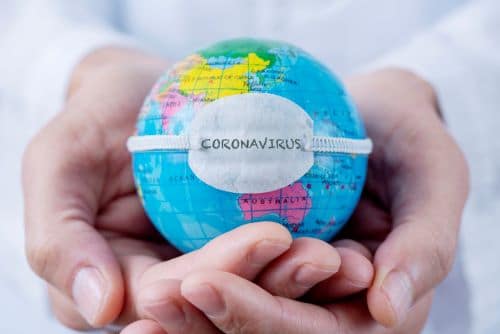Now that pandemic lockdowns are ending, all of us face important decisions about where we will go and what we will do.
Should you finally get your hair cut? Should you go to the gym?
Four public health experts assessed the risk various activities pose to spreading the coronavirus. They are Dr. Matthew Sims, Beaumont Health director of infectious disease research; Dr. Dennis Cunningham, McLaren Health Care medical director for infection prevention; Dr. Mimi Emig, retired infectious disease specialist with Spectrum Health; and Dr. Nasir Husain, Henry Ford Macomb medical director for infection prevention. [i]
The doctors said the risk comes down to five factors:
- Whether the activity is outdoors or indoors. Indoors is less safe, because the virus is more concentrated in an enclosed space.[ii]
- Proximity to other people. Activities that make social distancing difficult—concerts, fairs, shopping, etc.—are riskier.
- Exposure time. The longer you’re near others, the higher the risk.
- Likelihood of compliance. Places where people are conscientious about complying with recommendations such as mask wearing are lower risk.
- Personal risk level. If you’re older, you’re at greater risk. High blood pressure, heart disease, diabetes, and obesity also increase risk.[iii]
The Riskiest Public Places During the Pandemic
Based on these factors, the doctors scored the following places/activities on a scale of 1 to 10. The higher the number, the riskier the activity.
- Bars. Risk level 9. You can’t wear a mask while drinking. And people will tend to get careless after having a few drinks. They aren’t likely to social distance. “That’s when the trouble starts,” said. Dr. Husain.[iv]
- Amusement parks. Risk level 8. The doctors said that for amusement parks to lower their risk, they have to limit the number of people, enforce social distancing, and disinfect rides between passengers. But even with those precautions, “it’s going to be difficult,” said Dr. Sims.
- Buffets. Risk level 8. The experts said buffets aren’t as bad as bars, but they’re worse than sit-down restaurants.
- Churches. Risk level 8. A number of coronavirus spikes around the country have been tied to churches. They are risky because people are close to each other in an enclosed place for an extended time. Singing may cause churchgoers to expel more respiratory droplets, which is how the virus spreads.
- Gyms. Risk level 8. It’s difficult to social distance in gyms. And the heavy breathing that comes from working out expels more respiratory droplets.
- Public pools. Risk level 7. “There’s no way to make it safe,” said Dr. Emig. “How are you going to wear your mask in the pool?” And Dr. Husain points out that we have “no good data to show how the virus would behave in a pool.”
- Sports stadiums. Risk level 7. Large crowds and cheering add up to a high level of risk.
- Playing basketball. Risk level 7. Compared to other sports such as tennis, basketball is risky. Players are “banging into each other,” said Dr. Sims. “There’s a chance for masks to be ripped off. People may not want to use masks, because as you start breathing harder, the masks become more and more uncomfortable.”
- Hair salons and barbershops. Risk level 6. It’s risky “no matter how you look at it,” said Dr. Husain. “(The hair cutter) is right in your face.” Masks should be required for customers and staff, he said. And customers should wait in their cars rather than an inside waiting area.
- Restaurants. Risk level 6. Restaurants with well-spaced tables are safer. But it’s impossible to eat with a mask. Outdoor seating with tables far apart from each other is the best choice.
- Movie theaters. Risk level 6. To minimize risk, theaters should require face masks and space out seating.
- Airplanes. Risk level 5. Dr. Cunningham thinks planes are low risk because “the air is very well filtered.” But Dr. Emig points out that being bunched together with other passengers makes planes a higher risk, in her opinion.
- Backyard barbecues. Risk level 5. It’s easier for people to socially distance in outdoor settings. And if they use masks when not eating, it makes this a moderate-risk activity.
- Beaches. Risk level 5. The risk for beaches varies depending on how crowed they are.
- Getting groceries. Risk level 3. Most grocery stores have numerous precautions in place. Be sure to shop at stores where masks are required.
- Hotels. Risk level 3. Don’t worry about how your room was cleaned. Your risk of getting the virus through contact with objects such as beds or chairs is low. You should worry more about the lobby. Stay away when its crowded and wear a mask when you use the elevators.
- Walking, jogging, or biking. Risk level 2. Risk is low because you’re out in the open and not likely to be near other people for more than a few moments. Give extra space when passing others.
- Getting takeout food. Risk level 1. Curbside pickup and touchless payment have made getting takeout generally safe.
It’s OK to get out of the house during the pandemic. But keep in mind the risks you’ll face, and how to minimize them for each activity.
Editor’s Note: Discover the single best supplement for stronger immunity… The fruit extract that helps 93% of people with respiratory viruses get better in just two days… The germ hotspot that most of us forget to sanitize. Find all this and more in Independent Healing’s Coronavirus Pandemic Guide. Go HERE.
Related Articles
Coronavirus Doesn’t Spread the Way You Think
Coronavirus Stress: 5 Ways to Keep Calm and Carry On
9 Coronavirus Symptoms You Should Watch For
Like this Article? Forward this article here or Share on Facebook.
[i]https://www.mlive.com/public-interest/2020/06/from-hair-salons-to-gyms-experts-rank-36-activities-by-coronavirus-risk-level.html
[ii] https://www.cdc.gov/coronavirus/2019-ncov/daily-life-coping/going-out.html?CDC_AA_refVal=https%3A%2F%2Fwww.cdc.gov%2Fcoronavirus%2F2019-ncov%2Fdaily-life-coping%2Factivities.html
[iii] https://www.cdc.gov/coronavirus/2019-ncov/need-extra-precautions/groups-at-higher-risk.html
[iv] https://www.cdc.gov/coronavirus/2019-ncov/community/organizations/business-employers/bars-restaurants.html

